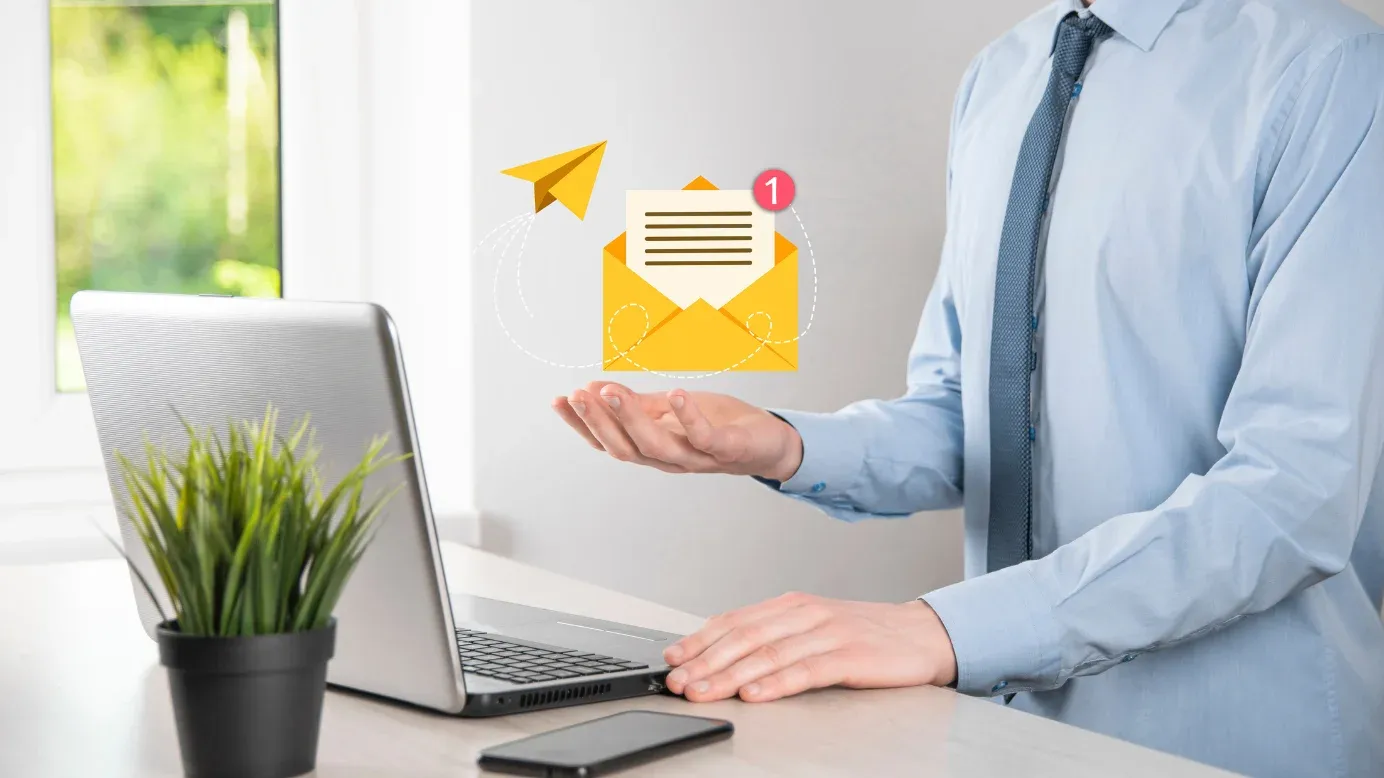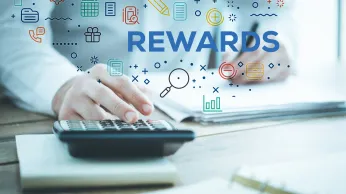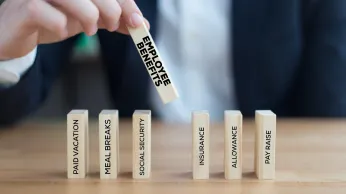10 Cara Balas E-mel Penghargaan pada tahun 2024
Ketahui cara membalas e-mel penghargaan dengan anggun. Terokai sebab ia penting, dos dan jangan, balasan sampel dan komponen utama untuk komunikasi yang berkesan.
Pada halaman ini
Dalam dunia komunikasi digital yang pantas, e-mel penghargaan yang mudah sering dapat terasa seperti permata yang jarang berlaku di tengah-tengah kekacauan peti masuk kami. Sama ada terima kasih yang tulus dari rakan sekerja, pelanggan yang menyatakan kepuasan, atau pengurus mengakui kerja keras anda, mesej ini memegang nilai penting dalam memupuk hubungan positif dan membina budaya penghargaan.
Namun, bagaimana kita bertindak balas terhadap ungkapan terima kasih ini sama pentingnya. Jawapan yang dibuat dengan baik mengakui kebaikan penghantar dan mengukuhkan ikatan antara individu dan meninggalkan kesan yang berkekalan.
Dalam catatan blog ini, kami menyelidiki membuat respons yang bernas untuk menghargai e-mel. Dari ucapan terima kasih yang tulus kepada pengakuan yang bijak, kami membentangkan 10 cara yang berkesan untuk membalas yang akan meninggalkan kesan positif dan mengukuhkan hubungan profesional.
Mengapa membalas e-mel penghargaan penting
Membalas e-mel penghargaan bukan sekadar latihan dalam kesopanan; ia adalah asas komunikasi yang berkesan dan pembinaan hubungan. Pertimbangkan sebab-sebab berikut mengapa ia penting:
- Memupuk hubungan: Mengakui penghargaan memupuk hubungan yang lebih kuat dengan rakan sekerja, pelanggan, dan kolaborator. Ia membina hubungan dan menggalakkan interaksi positif selanjutnya.
- Menggalakkan budaya terima kasih: Dengan membalas penghargaan, anda menyumbang kepada budaya pengiktirafan dan penghargaan dalam rangkaian profesional anda. Ia adalah kesan riak yang memupuk positif.
- Menguatkan reputasi profesional: Respons yang cepat dan baik untuk menghargai e-mel meningkatkan reputasi profesional anda. Mereka mempamerkan profesionalisme, perhatian, dan menghormati usaha orang lain.
Dos dan jangan membalas e-mel penghargaan
Dos
- Nyatakan keikhlasan: Jadilah tulen dan tulus dalam respons anda. Beritahu pengirim bahawa pengakuan mereka benar-benar dihargai.
- Segerakan: Balas tepat pada masanya untuk menyampaikan perhatian dan rasa hormat anda terhadap mesej penghantar.
- Peribadikan jawapan anda: Sesuaikan balasan anda kepada konteks dan kandungan tertentu e-mel penghargaan. Akui kata-kata penghantar dan serlahkan perkara tertentu jika boleh.
- Mengekalkan profesionalisme: Walaupun dalam tetapan kasual, mengekalkan nada profesional dan bahasa dalam tindak balas anda. Ia mencerminkan secara positif kemahiran komunikasi anda.
- Jemput interaksi selanjutnya: Menggalakkan komunikasi dan kerjasama yang berterusan dengan menyatakan keterbukaan kepada interaksi masa depan.
Adab
- Elakkan tindak balas generik: Elakkan balasan dalam tin atau generik. Mereka boleh dilihat sebagai tidak ikhlas dan menjejaskan kesahihan pengakuan anda.
- Jangan memandang rendah kesannya: Walaupun penghargaan itu kelihatan rutin atau dijangka, sentiasa bertindak balas dengan keikhlasan dan rasa terima kasih yang sama. Setiap pengakuan penting.
- Elakkan respons yang tertangguh: Respons yang tertangguh boleh mengurangkan kesan pengakuan anda. Berusaha untuk segera dalam balasan anda untuk mengekalkan momentum positif.
10 Contoh balasan untuk menghargai e-mel untuk senario yang berbeza
Berikut ialah 10 contoh balasan e-mel untuk senario penghargaan yang berbeza:
1. Pengakuan mudah
Sayang [Nama Penghantar],
Terima kasih atas e-mel anda yang bernas. Kata-kata penghargaan anda benar-benar sangat bermakna bagi saya. Saya gembira kerana dapat menyumbang secara positif.
Salam sejahtera
[Nama awak]
2. Pengiktirafan dengan galakan
Sayang [Nama Penghantar],
Saya gembira mendengar bahawa sumbangan saya sangat berharga bagi anda. Pengiktirafan anda memberi inspirasi kepada saya untuk terus memberikan usaha terbaik saya. Mari kita teruskan momentum bersama!
Salam mesra,
[Nama awak]
3. Syukur dan kerjasama masa depan
Sayang [Nama Penghantar],
Terima kasih atas kata-kata baik anda. Saya berterima kasih atas peluang untuk membantu anda. Saya mengharapkan lebih banyak kerjasama pada masa akan datang. Jangan ragu untuk menghubungi bila-bila masa.
Salam mesra,
[Nama awak]
4. Pengiktirafan usaha berpasukan
Sayang [Nama Penghantar],
Bagi pihak pasukan, saya ingin merakamkan ucapan terima kasih yang tulus kerana mengiktiraf usaha kami. Ia adalah usaha kolektif, dan kami teruja kerana telah memberi kesan positif. Berikut adalah untuk banyak lagi kejayaan bersama-sama!
Salam sejahtera
[Nama awak]
5. Pengiktirafan dan penghargaan
Sayang [Nama Penghantar],
Pengakuan anda sangat bermakna bagi saya. Saya amat menghargai pengiktirafan dan sokongan anda. Senang bekerja dengan anda.
Salam mesra,
[Nama awak]
6. Terima kasih atas bimbingan
Sayang [Nama Penghantar],
Saya sangat berterima kasih atas bimbingan dan bimbingan anda. Pengakuan anda mendorong motivasi saya untuk berkembang dan belajar. Terima kasih atas sokongan anda yang tidak ternilai.
Salam sejahtera
[Nama awak]
7. Terima kasih atas pengiktirafan
Sayang [Nama Penghantar],
Terima kasih kerana mengiktiraf pencapaian saya. Galakan anda amat bermakna bagi saya. Saya komited untuk mengekalkan standard yang tinggi dan menyumbang secara positif.
Salam mesra,
[Nama awak]
8. Penghargaan atas maklum balas
Sayang [Nama Penghantar],
Saya menghargai maklum balas dan pengiktirafan anda yang bernas terhadap kerja saya. Pandangan anda tidak ternilai, dan saya berterima kasih atas peluang untuk belajar dan bertambah baik.
Salam sejahtera
[Nama awak]
9. Pengakuan sokongan
Sayang [Nama Penghantar],
Pengakuan anda terhadap sokongan saya amat dihargai. Senang membantu anda, dan saya di sini bila-bila masa anda memerlukan bantuan.
Salam mesra,
[Nama awak]
10. Penghargaan bersama
Sayang [Nama Penghantar],
Terima kasih atas kata-kata baik anda. Perasaan penghargaan bersama benar-benar menaikkan semangat. Mari kita terus menyokong dan memberi inspirasi antara satu sama lain.
Salam sejahtera
[Nama awak]
Komponen tindak balas yang dibuat dengan baik kepada e-mel penghargaan
Respons yang dibuat dengan baik kepada e-mel penghargaan terdiri daripada beberapa komponen utama yang memastikan kejelasan, keikhlasan, dan profesionalisme. Berikut adalah elemen penting:
1. Syukur
Merakamkan penghargaan atas pengakuan atau pengiktirafan yang disampaikan dalam e-mel tersebut. Ini menetapkan nada positif dan mengakui usaha penghantar dalam menghubungi anda.
2. Pengiktirafan
Kenali tindakan, sumbangan, atau kualiti tertentu yang mendorong penghargaan. Akui kata-kata dan usaha pengirim, menunjukkan bahawa anda telah benar-benar menerima dan memahami mesej tersebut.
3. Sambungan
Memperkukuhkan hubungan dan hubungan dengan penghantar. Gunakan bahasa yang memupuk rasa persahabatan, perkongsian, atau kerjasama. Ini membantu mengukuhkan ikatan profesional dan menggalakkan interaksi positif selanjutnya.
4. Pemperibadian
Sesuaikan respons anda dengan konteks dan kandungan tertentu e-mel penghargaan. Elakkan tindak balas generik atau dalam tin, kerana ia boleh dilihat sebagai tidak ikhlas. Merujuk butiran khusus yang disebutkan dalam mesej penghantar menunjukkan perhatian dan keprihatinan.
5. Profesionalisme
Kekalkan nada profesional dan bahasa sepanjang tindak balas anda. Walaupun dalam tetapan yang lebih kasual, profesionalisme meningkatkan kredibiliti anda dan mencerminkan secara positif kemahiran komunikasi anda.
6. Rendah diri
Bersikap rendah hati dalam menerima pujian atau pengakuan. Elakkan pujian diri yang berlebihan atau membanggakan, kerana ia boleh mengurangkan keikhlasan tindak balas anda. Sebaliknya, fokus untuk menyatakan rasa terima kasih dan rendah hati dalam jawapan anda.
7. Penglibatan masa depan
Nyatakan keterbukaan kepada interaksi masa depan, kerjasama, atau peluang untuk bekerjasama. Jemput komunikasi atau dialog lebih lanjut, menunjukkan kesediaan anda untuk mengekalkan dan memupuk hubungan profesional.
8. Kesopanan dan kesopanan
Gunakan bahasa yang sopan dan sopan sepanjang tindak balas anda. Sertakan sapaan yang sesuai, seperti "Sayang [Nama Penghantar]" atau "Hello [Nama Penghantar]," dan diakhiri dengan penutupan yang sopan, seperti "Salam hormat," "Ikhlas," atau "Salam mesra."
9. Kejelasan dan kesimpulan
Pastikan jawapan anda jelas, ringkas dan mudah difahami. Elakkan perbincangan rambling atau tangen. Tumpukan pada menyampaikan mesej anda dengan berkesan sambil menghormati masa dan perhatian pengirim.
10. Proofreading
Sebelum menghantar respons anda, baca pruf dengan teliti untuk ralat tatabahasa, ejaan dan tanda baca. E-mel yang ditulis dengan baik dan bebas ralat mencerminkan secara positif perhatian anda terhadap perincian dan profesionalisme.
Kesimpulan
Mengemudi e-mel penghargaan bukan semata-mata untuk mengakui rasa terima kasih; Ini mengenai memupuk hubungan yang bermakna dan mengukuhkan interaksi positif dalam bidang profesional dan peribadi.
Semasa kami menyimpulkan penerokaan kami tentang sepuluh cara yang berkesan untuk membalas e-mel penghargaan, jelas bahawa ungkapan terima kasih yang tulen, pengakuan usaha, dan sentuhan keperibadian pergi jauh dalam mengukuhkan hubungan dan membina budaya penghargaan.
Dalam era di mana komunikasi digital sering kekurangan kehangatan interaksi bersemuka, menguasai seni bertindak balas terhadap e-mel penghargaan menjadi lebih penting. Dengan meluangkan masa untuk membuat respons yang bijaksana dan ikhlas, kita bukan sahaja mengakui usaha orang lain tetapi juga memupuk budaya timbal balik dan muhibah.
Pada akhirnya, pertukaran e-mel penghargaan berfungsi sebagai lebih daripada sekadar formaliti-ia adalah peluang untuk mengukuhkan ikatan, memberi inspirasi kepada keyakinan, dan memupuk rasa kekitaan dalam rangkaian profesional kami dan seterusnya. Semasa kita menerima kuasa kesyukuran dan komunikasi yang bijaksana, marilah kita terus memupuk persekitaran di mana penghargaan berkembang maju, dan hubungan berkembang.













